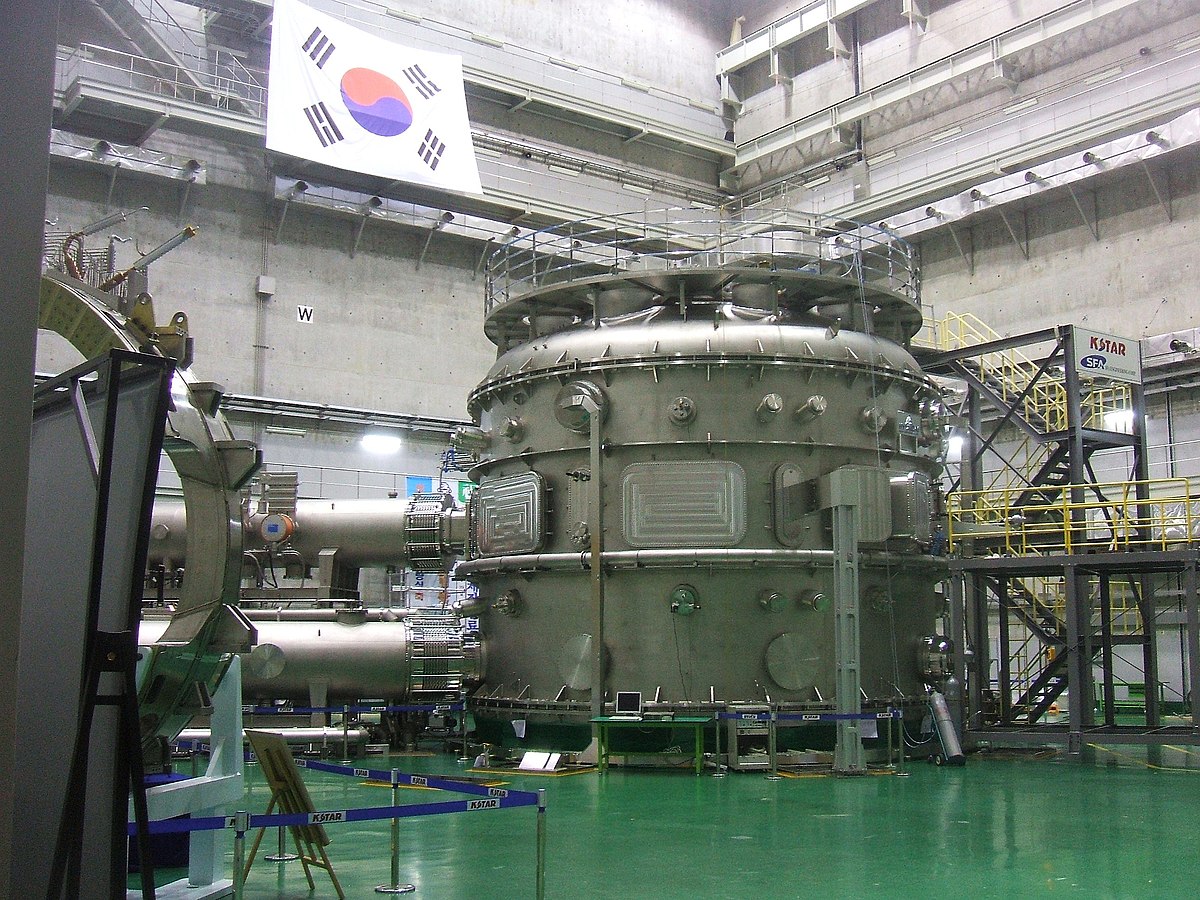The experimental thermonuclear reactor maintained an ultra-high temperature for a record 48 seconds. It is quite possible that it will become a new step towards the realization of the idea of obtaining a huge amount of clean energy.

New record of nuclear fusion
South Korean scientists reported that the “artificial sun” they created set a new record for thermonuclear fusion by heating the plasma circuit to 100 million degrees Celsius for 48 seconds.
The Korean Tokamak Advanced Research (KSTAR) superconducting reactor broke the previous world record of 31 seconds, which was set by it in 2021. This breakthrough is a small but impressive step on the long road to a source of almost unlimited clean energy.
Scientists have been trying to harness the power of nuclear fusion, the process by which stars burn, for more than 70 years. It lies in the fact that under conditions of enormous pressures and temperatures it becomes possible. This converts matter into light and heat, producing huge amounts of energy without generating greenhouse gases or long-term radioactive waste.
How a thermonuclear reactor works
However, recreating the conditions that exist in the hearts of the stars is not an easy task. The most common design of a thermonuclear reactor, tokamak, works by overheating plasma (one of the four states of matter consisting of positive ions and negatively charged free electrons) and holding it inside a toroidal reactor chamber with powerful magnetic fields.
However, keeping turbulent and superheated plasma coils in place long enough for nuclear fusion to occur was a painstaking process. Soviet scientist Natan Yavlinsky designed the first tokamak in 1958, but no one has yet managed to create a reactor capable of giving off more energy than it takes in.
One of the main stumbling blocks was how to handle plasma hot enough for fusion. Thermonuclear reactors require very high temperatures — many times hotter than in the Sun. And that’s because they have to work at a much lower pressure than where thermonuclear fusion naturally occurs in the cores of stars. For example, the core of the Sun reaches a temperature of about 15 million degrees Celsius, but has a pressure about 340 billion times higher than the air pressure at sea level on Earth.
Technical difficulties of controlled thermonuclear fusion
Preparing plasma to such temperatures is a relatively easy task, but finding a way to corral it so that it does not burn through the reactor without destroying the thermonuclear fusion process is technically difficult. This is usually done using lasers or magnetic fields.
To increase the plasma burning time compared to the previous record experiment, the scientists changed some aspects of the reactor design, including replacing carbon with tungsten, to increase the efficiency of tokamak “diverters” that remove heat and ash from the reactor.
This record joined others set at competing fusion reactors around the world, including the U.S. government-funded National Ignition Facility (NIF), which made headlines after the reactor core briefly released more energy than was put into it.
According to space.com
Follow us on Twitter to get the most interesting space news in time
https://twitter.com/ust_magazine


